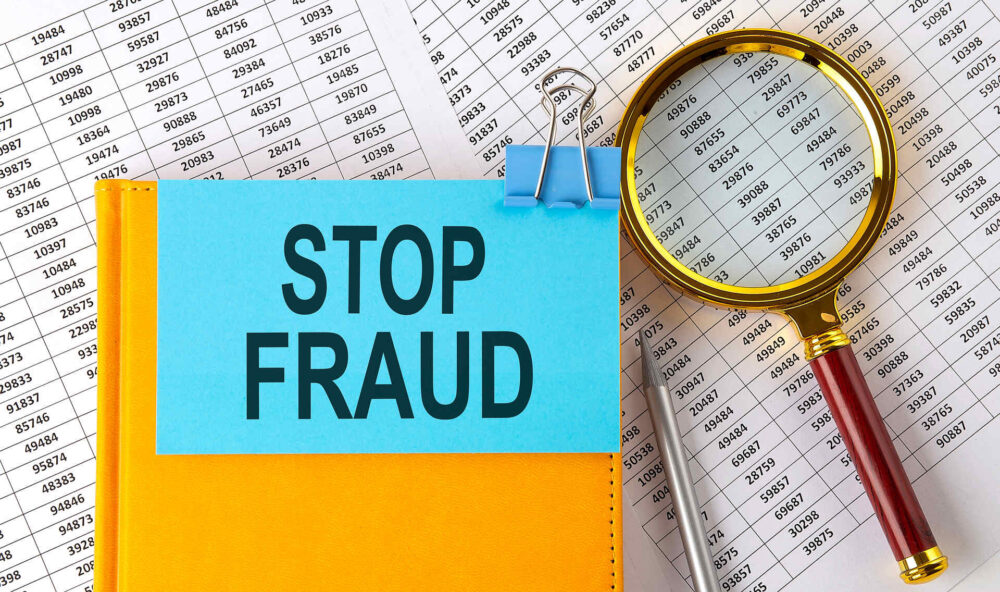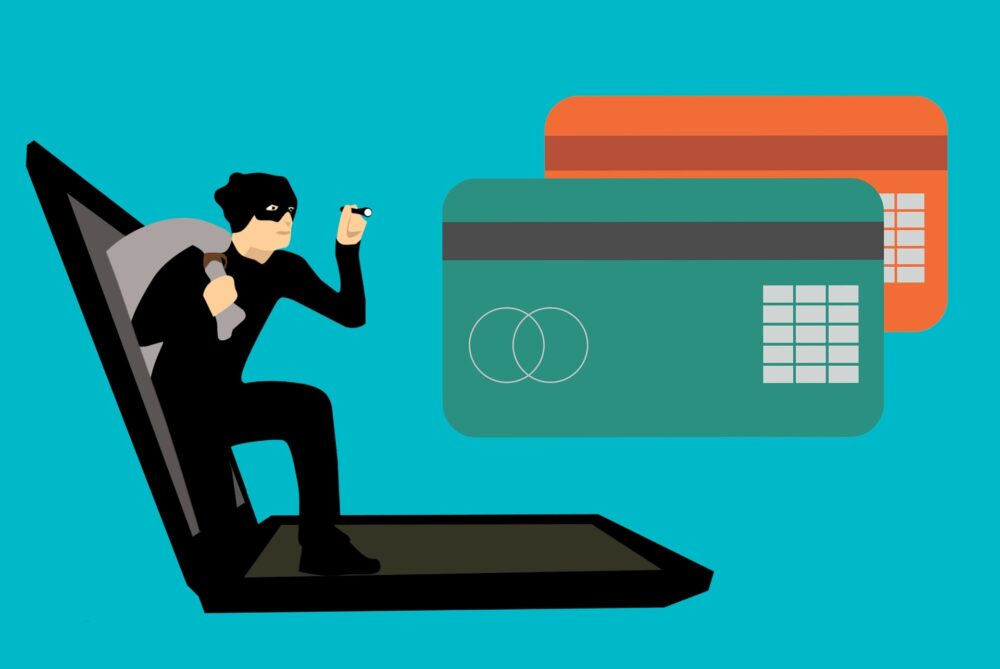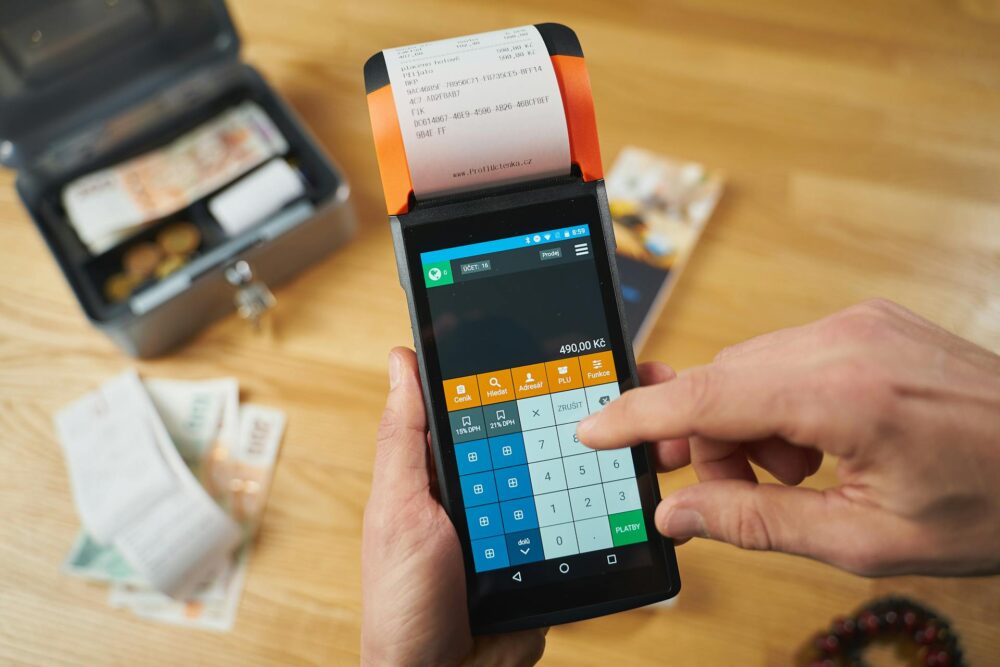Online identity theft has become a widespread threat in today’s digital age, as cybercriminals use advanced tactics to exploit personal and financial information. For merchants, the stakes are particularly high, as it can result in financial losses through fraudulent transactions and chargebacks. On top of it, it jeopardizes customer trust and damages a business’s reputation. Let’s delve deeper into this topic and explore what each merchant needs to be aware of.
What Is Identity Theft?
Identity theft is the unauthorized use of another person’s personal information, such as their name, Social Security number, or financial information, usually for financial advantage. This type of third-party fraud can take many forms, each presenting unique threats to businesses and consumers. Here are some of the most common fraud types:
- Credit card fraud involves unauthorized use of a person’s credit card for purchases or cash withdrawals.
- Account takeovers happen when a thief gains access to a customer’s or business’s online accounts.
- Phishing scams happen through fraudulent emails or messages designed to trick victims into sharing sensitive information, such as passwords or financial details.
For consumers, identity theft can result in financial losses, damaged credit scores, and the stress of disputing fraudulent activity. Businesses, especially merchants, face chargebacks, lost revenue, reputational harm, and potential legal liabilities when fraudsters use stolen identities to make unauthorized purchases or access services.
Understanding the Scale of Credit Card Fraud in the US
Recent statistics reveal the significant impact of identity theft and credit card fraud on both individuals and businesses. Out of 1.1 million identity theft cases that the Federal Trade Commission reported in 2023, nearly 30% involved credit card fraud. This means there were approximately 330,000 cases of credit card fraud.
For businesses, the financial toll is substantial. In the US, nearly 15% of small businesses experience some form of fraud annually, with average losses amounting to $38,000 per business. Globally, credit card fraud is on the rise, with estimated losses projected to reach $397.4 billion within the next decade.

How Personal Information Theft Impacts Merchants
Personal information theft doesn’t only affect individuals – its consequences extend to merchants who become indirect victims of fraud. Businesses face a range of challenges when dealing with scammers, so it’s important for merchants to know all about them to be able to prevent such things from happening.
Significant Financial Costs
Identity theft can lead to significant financial burdens for merchants. These include chargebacks from fraudulent transactions, penalties from credit card processing companies, and lost revenue when customers lose trust. For example, a retailer who unknowingly processes stolen card payments may face high chargeback fees and be held liable for the transaction amount.
Substantial Reputational Damage
A breach of customer data can irreparably harm a business’s reputation. Customers who feel their sensitive information is unsafe may take their business elsewhere, and negative media coverage can amplify the damage. Small businesses, in particular, face challenges in rebuilding trust due to limited resources and public scrutiny.
Disruptions to Workflow
The aftermath of fraud can severely disrupt daily operations because time and resources are redirected toward resolving disputes, addressing fraud claims, and enhancing security measures. Employees may need to focus on breach management rather than core business activities, which can further impact productivity.

Common Tactics Targeting Merchants
Fraudsters targeting merchants often exploit vulnerabilities in payment systems, employee behavior, or data storage practices. Being aware of these tactics can help businesses identify potential threats and protect their operations.
1. Fake Payment Methods
Fraudulent payment methods, such as stolen credit cards, counterfeit cards, or fake checks, are frequently used by scammers. These methods allow criminals to complete unauthorized transactions and leave merchants responsible for chargebacks and financial losses. Key red flags include:
- Mismatched billing and shipping addresses.
- Customers placing unusually large orders or making repeat purchases in a short timeframe.
- Declined transactions followed by multiple retries with different cards.
Merchants should implement tools like real-time payment authentication and address verification systems (AVS) to prevent losses.
2. Data Breaches
Cybercriminals often target merchant databases to steal sensitive customer information, including payment details and personal identifiers. Poor cybersecurity practices, such as weak passwords, outdated software, and unencrypted data, create vulnerabilities.
Signs of a breach might include unexplained system slowdowns, unauthorized login attempts, and the discovery of malware or phishing attempts directed at employees. In order to minimize risks, merchants should regularly update security software, require strong passwords, and use encryption to protect stored data.
3. Phishing Attacks
Fraudsters often impersonate legitimate entities through emails, phone calls, or text messages to deceive merchant employees into sharing sensitive information, such as login credentials or payment details.
Warning signs include messages with urgent requests to verify account details or reset passwords, as well as suspicious links or attachments in emails. Educating employees about phishing tactics and implementing multi-factor authentication (MFA) can reduce the likelihood of successful attacks.
4. Insider Threats
Sometimes, employees themselves may mishandle or steal customer data, either intentionally or unintentionally. Poor data access controls and insufficient employee training can worsen this risk. Preventative measures include conducting background checks, limiting access to sensitive information, and monitoring employee activities for unusual behavior.

How to Prevent Identity Theft
Preventing identity theft is a shared responsibility between merchants, their employees, and their customers. Taking proactive measures to secure payment systems, train staff, and regularly monitor transactions can go a long way in minimizing the risks associated with fraud. Let’s discuss some of the most effective ways merchants can protect themselves and their customers.
Tokenization and Encryption – Best Identity Theft Protection Systems
A critical aspect of preventing identity theft is ensuring that payment systems are secure. Compliance with the Payment Card Industry Data Security Standard (PCI DSS) is essential for any merchant handling card payments. These standards require merchants to implement strict controls, including encryption, tokenization, and secure storage practices to protect customer data.
Encryption is a technique that converts sensitive data into code and makes it unreadable without a decryption key. Even if cyber criminals access their network, businesses can protect their customers from potential theft by encrypting personal data and credit card information.
Tokenization involves replacing sensitive card data with a unique identifier or “token” that holds no real value to hackers. This adds another layer of protection to transactions and helps minimize the risk of fraud.
Merchants should also adopt end-to-end encryption for all transactions and ensure that their credit card processing services follow the highest security standards. Regularly reviewing and updating security protocols can help stay ahead of evolving threats.
Train Staff Regularly
Employees are often the first line of defense against identity theft. Educating staff about common fraud tactics is crucial for preventing attacks. Here is what they should know about:
- Employees should be able to recognize suspicious emails, messages, or phone calls requesting sensitive information. Training should include how to spot red flags, such as urgent language, unfamiliar senders, or suspicious links.
- Staff should be taught the importance of protecting customer information, especially when handling payment data. They should also be aware of company policies regarding data storage and sharing.
- Provide employees with clear guidelines on how to flag potentially fraudulent transactions, such as unusually large purchases or high-risk locations. Having a process for verifying high-risk transactions can prevent fraudulent activities before they escalate.
Regular training sessions can help keep employees aware of the latest threats and ensure that security protocols are consistently followed.
Two-Factor Authentication
Merchants should implement two-factor authentication (2FA) for all business accounts, including email, payment processing systems, and employee portals. 2FA adds an extra layer of protection by requiring users to provide two forms of verification. Typically, this involves something the user knows, such as a password, and something they have, such as a code sent to a mobile device.
Monitor Transactions Regularly
Continuous monitoring of transactions is key to identifying suspicious activity early. Merchants can implement fraud detection tools that analyze transaction patterns and flag irregularities. These tools use machine learning and data analytics to recognize signs of fraud, such as unusual spending behavior or multiple failed payment attempts.
As a merchant, you should set up alerts for transactions above a certain threshold, especially if they come from high-risk areas or if the billing and shipping addresses do not match. This allows businesses to quickly verify these transactions before they are processed.
Maintain Compliance With Regulations
Merchants must comply with various data protection regulations in order to protect customer information. For businesses operating in the EU, the General Data Protection Regulation (GDPR) mandates strict guidelines for collecting, storing, and processing customer data. Non-compliance can lead to hefty fines.
The California Consumer Privacy Act (CCPA) provides residents in California with the right to know what personal data is being collected, request its deletion, and opt out of sales of their personal data. Of course, these are just a couple of examples, so make sure that you’re operating in compliance with the regulations in your immediate area.

Steps to Take Immediately After a Suspected Identity Theft Case
If these situations happen, it’s extremely important to know the answer to the question – how do you report identity theft? It takes several different steps, including responding quickly, working with professionals, and communicating transparently for a business to minimize the impact of identity theft and begin the process of rebuilding customer trust.
Notify Affected Customers and Banks
So, as a merchant – how do I report identity theft? When a breach is suspected, it’s crucial to notify affected customers and financial institutions as soon as possible. Informing customers helps them take immediate action to protect their accounts, such as changing passwords or freezing their credit. Businesses should work with banks to halt unauthorized transactions and avoid further financial loss.
Investigate the Breach
The next step is to investigate the breach to determine its scope. This includes identifying how the breach occurred, which data was compromised, and how far the damage extends. In some cases, businesses may need to work with cybersecurity experts to trace the source of the breach and prevent future incidents.
Work With Law Enforcement or Cybersecurity Experts
In cases of significant identity theft, it may be necessary to involve law enforcement or cybersecurity professionals. Law enforcement can assist with criminal investigations if the breach involves fraud or theft. Cybersecurity experts can help analyze system vulnerabilities, recommend improvements to security protocols, and assist in restoring data integrity.

Communicate Transparently With Customers
Keep in mind that transparency is key to maintaining customer trust, especially when dealing with a security breach. Communicate openly with customers about what happened, how it affects them, and what steps are being taken to resolve the issue. It’s important to acknowledge the breach, offer assistance such as credit monitoring services, and show customers that their security is a priority. Offering a clear timeline of actions taken can further reassure them.
The Importance of Preventing Identity Theft
Identity theft poses a significant risk to merchants and their customers. Working with a trusted credit card processing company, such as Merchant Chimp, ensures that you have access to the latest security technologies. Don’t wait until it’s too late – partner with Merchant Chimp today, consider our merchant services and credit card processing, and take the necessary steps to secure your business against the growing threat of identity theft.









